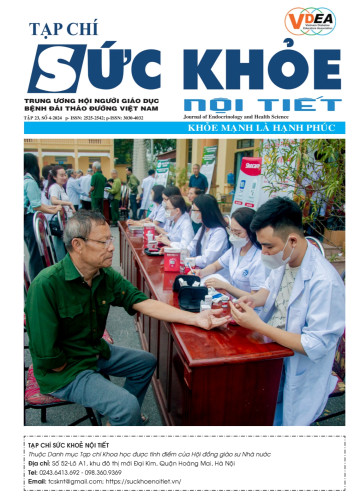Đăng ký
Vui lòng nhập các thông tin cần thiết

TÀI LIỆU THAM KHẢO
1. Sepúlveda C (2002). Palliative Care: the World Health Organization's global perspective. J Pain Symptom Manage; 24(2): 91-96.
2. Buss MK, LK Rock, EP McCarthy (2017). Understanding palliative care and hospice: a review for primary care providers. in Mayo Clinic Proceedings. 2017. Elsevier.
3. Connor S. R., Sepulveda B.M. (2018). Global atlas of palliative care at the end of life.
4. World Health Organization (2002). National cancer control programmes, policies and managerial guidelines.
5. Figueredo Borda N (2019). Nursing models and theories: support for palliative care; Enfemeria; 8(2): 22-33.
6. Filej, B (2018). Holistic model of palliative care in hospital and community nursing: The example of south-eastern Slovenia. Cent Eur J Nurs Midw; 9(1): 773-780.
7. Walker, L.O, K.C. Avant (2005). Strategies for theory construction in nursing. Vol. 4. 2005: Pearson/Prentice Hall Upper Saddle River.
8. Hui D, Nooruddin Z (2014). Concepts and definitions for "actively dying," "end of life," "terminally ill," "terminal care," and "transition of care": a systematic review. J Pain Symptom Manage; 47(1):77-89.
9. Krau SD (2016). The Difference Between Palliative Care and End of Life Care: More than Semantics. Nurs Clin North Am;51(3):ix-x.
10. Avanzato A (2017). Early Hospice and Palliative Care. Am J Nurs; 117(2): 11.
11. Radbruch L (2020). Redefining Palliative Care-A New Consensus-Based Definition. J Pain Symptom Manage; 60(4): p. 754-764.
12. American Academy Of Hospice And Palliative Medicine DA (2022). PC-FACS May 2, 2022. J Pain Symptom Manage;64(1):80-87.
13. Ferris, F.D (2009). Palliative cancer care a decade later: accomplishments, the need, next steps -- from the American Society of Clinical Oncology. J Clin Oncol; 27(18): p. 3052-8.
14. Cherny, N.I., R. Catane (2003). ESMO takes a stand on supportive and palliative care. Ann Oncol; 14(9): 1335-7.
15. Thomas, K (2018). Population-based, person-centred end-of-life care: time for a rethink. British Journal of General Practice; p. 116-117.
16. Rosa WE (2022). Geriatrics communication skills training program for oncology healthcare providers to improve the management of care for older adults with cancer. PEC Innov. 2022;1:100066.
17. Banerjee SC, Haque N (2021). Oncology Care Provider Training in Empathic Communication Skills to Reduce Lung Cancer Stigma. Chest;159(5):2040-2049.
18. Ferrell, B.R. and J.A (2019). Paice, Oxford textbook of palliative nursing. 2019: Oxford University Press.
19. St Marie, B.J (2002). Core curriculumn for pain management nursing. 2002.
20. Rodgers BL (1989). Concepts, analysis and the development of nursing knowledge: the evolutionary cycle. J Adv Nurs;14(4):330-335.
21. Akoo C, McMillan K (2023). An Evolutionary Concept Analysis of Palliative Care in Oncology Care. ANS Adv Nurs Sci;46(2):199-209.
22. Howie L, Peppercorn J (2013). Early palliative care in cancer treatment: rationale, evidence and clinical implications. Ther Adv Med Oncol;5(6):318-323
23. Kim H, Kelly S (2021). A Scoping Review of the Conceptual Differentiation of Technology for Healthy Aging. Gerontologist; 61(7):345-369
24. Higginson, I.J (1993). Clinical audit in palliative care.
25. Higginson, I.J (1994). Clinical audit and organizational audit in palliative care. Cancer Surv; 21: 233-245.
26. Edmonds PM, Stuttaford JM (1998). Do hospital palliative care teams improve symptom control? Use of a modified STAS as an evaluation tool. Palliat Med;12(5):345-351.
27. Lo RS, Ding A (1999). Prospective study of symptom control in 133 cases of palliative care inpatients in Shatin Hospital. Palliat Med;13(4):335-340.
28. Schildmann EK, Groeneveld EI (2016). Discovering the hidden benefits of cognitive interviewing in two languages: The first phase of a validation study of the Integrated Palliative care Outcome Scale. Palliat Med;30(6):599-610.
TÓM TẮT
Mục tiêu: Phân tích khái niệm chăm sóc giảm nhẹ. Phương pháp: Việc phân tích được thực hiện theo phương pháp Walker và Avant (gồm 9 bước: Lựa chọn khái niệm, xác định mục tiêu phân tích, xác định tất cả định nghĩa của khái niệm, xác định thuộc tính cuả khái niệm, xây dựng trường hợp lâm sàng, xây dựng các trường hợp liên quan, xác định tiền đề và hậu quả, xác định tham chiếu thực nghiệm, tổng hợp viết lại khái niệm phân tích), quá trình tìm kiếm tài liệu được thực hiện tìm kiếm qua ba cơ sở dữ liệu là PubMed, Google Scholar, CINAHL Database. Kết quả: Qua tham khảo tài liệu, xác định được các thuộc tính của chăm sóc giảm nhẹ là lấy người bệnh là trung tâm và kiểm soát cơn đau, tiền đề là các bệnh nan y, các bệnh cấp tính hoặc mạn tính. Hậu quả là cải thiện chất lượng cuộc sống và tăng cường khả năng tự chăm sóc. Kết luận: Sự hiểu biết về chăm sóc giảm nhẹ qua phân tích khái niệm này giúp cho các điều dưỡng, bác sĩ điều trị phát hiện sớm các vấn đề cần chăm sóc và nhu cầu của người bệnh, từ đó cải thiện chất lượng chăm sóc, nâng cao chất lượng cuộc sống cho người bệnh.
Từ khóa: Chăm sóc giảm nhẹ, phân tích khái niệm.
PALLIATIVE CARE: A CONCEPT ANALYSIS
ABSTRACT
Objective: To analyze the concept of palliative care. Method: The analysis was conducted according to the Walker and Avant method (including 9 steps: Selecting the concept, determining the analysis objective, determining all definitions of the concept, determining the attributes of the concept, building clinical cases, building related cases, determining the premise and consequences, determining empirical references, synthesizing and rewriting the analysis concept), the document search process was conducted through three databases: PubMed, Google Scholar, CINAHL Database. Results: Through the literature review, it was determined that the attributes of palliative care are patient-centered and pain control, the premise is incurable diseases, acute or chronic diseases. The consequence is improving the quality of life and enhancing self-care ability. Conclusion: Understanding palliative care through this conceptual analysis helps nurses and treating physicians detect early problems requiring care and the needs of patients, thereby improving the quality of care and enhancing the quality of life for patients.
Keywords: Palliative care, conceptual analysis.